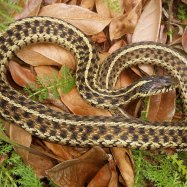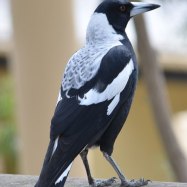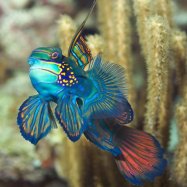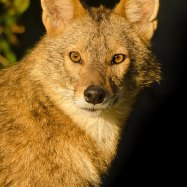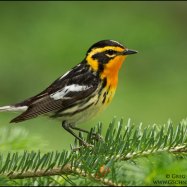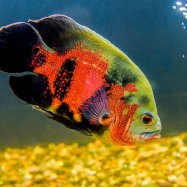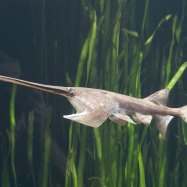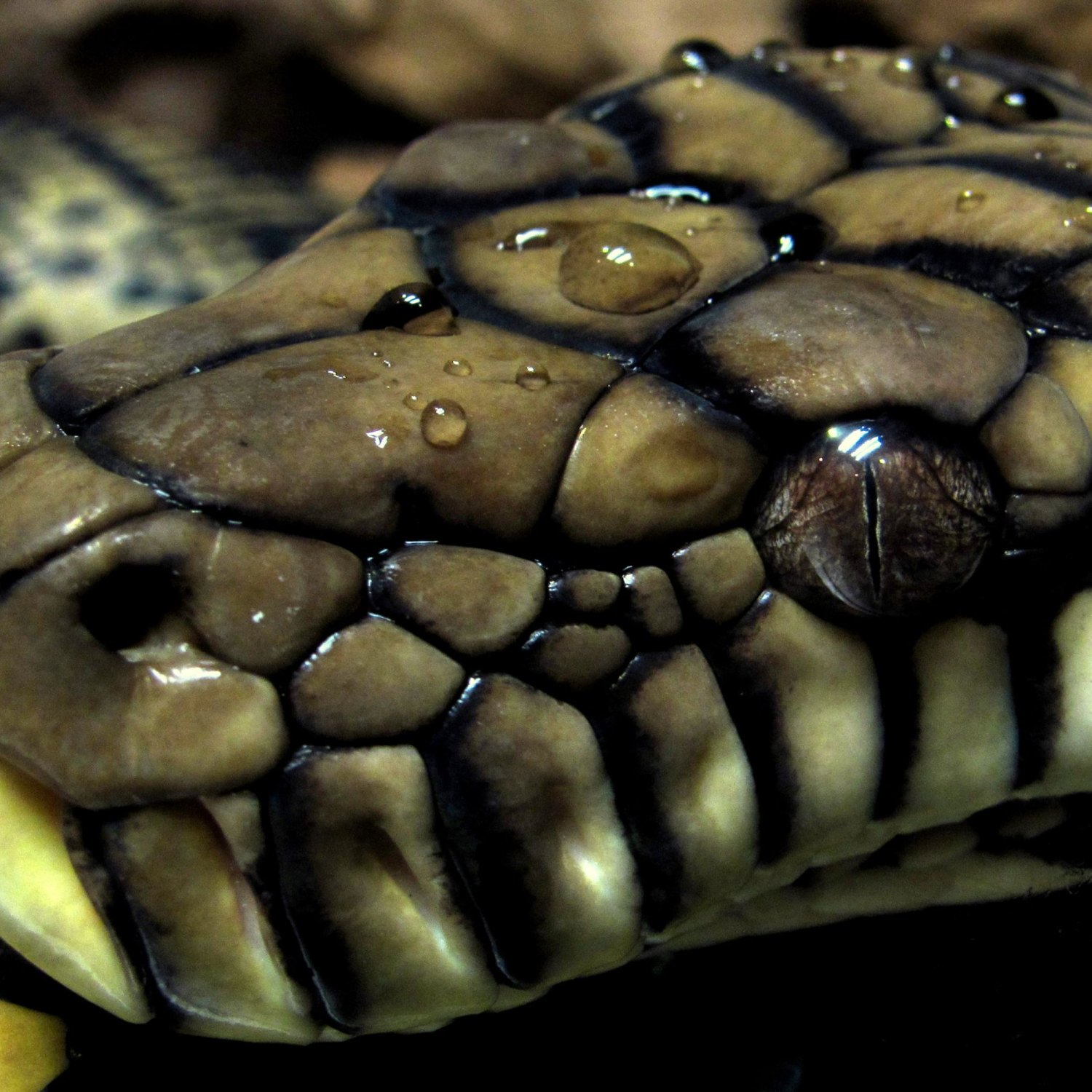
Amethystine Python
Up to 7 meters (23 feet)
The Amethystine Python, found in northern and eastern Australia, Indonesia, and Papua New Guinea, can reach a length of up to 7 meters! With a large and muscular body and a triangular-shaped head, this python is truly a sight to behold. It belongs to the Pythonidae family and is a popular attraction for nature lovers and reptile enthusiasts.
Animal Details Summary:
Common Name: Amethystine Python
Kingdom: Animalia
Habitat: Rainforests, woodlands, and coastal areas
The Majestic Amethystine Python: A Fascinating Reptile with a Colorful Past
From its stunning appearance to its unique habitat, the Amethystine Python is a reptile that has captured the attention of many. With its scientific name, Morelia amethistina, and common name, Amethystine Python, this magnificent creature has come to be known by various names such as Scrub Python, Diamond Python, and Carpet Python. Regardless of what it is called, there is no denying the incredible features and characteristics that make it stand out in the animal kingdom.The Basics: Kingdom, Phylum, Class, Order, and Family
The Amethystine Python belongs to the Animalia kingdom, the group of organisms known as animals Amethystine Python. It falls under the Chordata phylum, which includes animals with a notochord or backbone, and the Reptilia class, consisting of animals that are cold-blooded, lay eggs, and have scales or bony plates. As part of the Squamata order, the Amethystine Python is classified under the suborder Serpentes, which includes snakes. Finally, its family is Pythonidae, which comprises of non-venomous snakes, commonly referred to as pythons.Habitat and Geographical Distribution
The Amethystine Python is known to thrive in a range of habitats, including rainforests, woodlands, and coastal areas. These magnificent creatures have been found in Australia, Indonesia, and Papua New Guinea, making them native to Southeast Asia and Oceania. Within Australia, they are commonly found in the northern and eastern regions, while in Indonesia, they are found in the southern and southeastern islands. In Papua New Guinea, they are widely distributed throughout the country's mainland and surrounding islands.This widespread geographical distribution makes the Amethystine Python one of the most versatile reptiles, able to adapt to diverse landscapes and thrive in a variety of environments. However, their habitats are under constant threat due to human activities, leading to a decline in their numbers and endangerment in certain regions Ambrosia Beetle. The International Union for Conservation of Nature (IUCN) has categorized the Amethystine Python as a species of "Least Concern" due to its wide distribution and apparent population stability.
Feeding Method
Like other pythons, the Amethystine Python is a carnivore, meaning it relies on a diet consisting of other animals. Its diet primarily consists of mammals such as rodents, birds, lizards, and other snakes. Their feeding technique is unique, with the Amethystine Python using its muscular body and sharp teeth to constrict and suffocate its prey before consuming it whole. These creatures have the ability to stretch their jaws to an incredible width, allowing them to devour larger prey.Appearance and Coloration
One of the most striking features of the Amethystine Python is its beautiful appearance. They have a large and muscular body that can grow up to an impressive length of 7 meters (23 feet). The shape of their body is slightly triangular, with a larger head that tapers towards the tail, which is thick and muscular. This distinct body shape allows them to move through narrow gaps and crevices with ease.In terms of coloration, the Amethystine Python has a range of shades it can vary from, such as blue-gray to various shades of brown. These colors are complemented by lighter markings that run along their entire body, giving them a unique and eye-catching pattern. The vivid and iridescent coloration is where the python gets its name, as it resembles the gemstone amethyst.
The Country of Origin: Australia
The Amethystine Python is considered to be indigenous to Australia, with a significant population found in the country's northern and eastern regions. It is believed that they have been around for thousands of years, with historical evidence dating back to the early colonial period.These majestic creatures have a rich history in Australia, with the Aboriginal people incorporating them into their ancient beliefs and practices. The Amethystine Python was considered a sacred animal, often depicted in artworks, songs, and dances, symbolizing strength, power, and protection.
Today, the Amethystine Python continues to hold a significant place in Australian culture, with various conservation efforts in place to protect and preserve this unique reptile.
The Amethystine Python and Its Role in the Environment
As with any animal in the ecosystem, the Amethystine Python plays a vital role in maintaining the balance of its environment. Being a predator, they help regulate the populations of their prey, preventing the spread of disease and maintaining the health of their surroundings.Additionally, their shedding of skin and waste products provide essential nutrients for the soil, promoting plant growth and aiding in decomposition. These pythons also serve as a food source for other animals, contributing to the food chain and maintaining a diverse ecosystem.
The Threats Facing the Amethystine Python
Despite their resilient nature, the Amethystine Python faces several threats in the wild. Human activities such as habitat destruction and fragmentation, road mortality, and illegal collection and trade of these animals all contribute to a decline in their numbers.The loss of their natural habitats, in particular, has significantly impacted their population, as they rely on intact rainforests and woodlands for shelter and food. These activities are rapidly encroaching on their territories, leaving them with limited spaces to thrive and survive.
Road mortality is also a significant threat, as the pythons tend to bask on or near roads during cooler months, making them susceptible to being run over by vehicles. This not only leads to deaths but also affects their reproductive rates and ability to find suitable mates.
Illegal collection and trade of the Amethystine Python in the pet trade is another threat, as it disrupts their natural population and affects their genetic diversity. Many times, these animals are kept in inadequate conditions, leading to health issues and eventual death.
Conservation Efforts and Initiatives
Thankfully, various organizations and authorities are actively working towards protecting and preserving the Amethystine Python. In Australia, the Australian Wildlife Conservancy manages over 6 million hectares of land, including crucial habitats for the pythons, ensuring their protection and conservation.In Papua New Guinea, organizations such as the PNG Wildlife Conservation Society work closely with local communities to promote conservation efforts and raise awareness about the importance of these creatures. They have also established protected areas to safeguard the Amethystine Python's habitats and monitor their populations.
In terms of trade and collection, CITES (Convention on International Trade in Endangered Species) regulates and monitors the international trade of the Amethystine Python, ensuring that it does not pose a threat to the species' survival.
Final Thoughts
The Amethystine Python, with its stunning appearance and fascinating characteristics, is a true marvel of the animal kingdom. From its vast distribution to its role in the environment, it is clear that this reptile is a vital and irreplaceable part of Southeast Asia and Oceania's ecosystem.However, with increasing human activities, their natural habitats and populations are under threat. It is our responsibility to ensure that these beautiful creatures continue to exist and thrive in the wild. With concerted conservation efforts and initiatives, we can protect the Amethystine Python for future generations to appreciate and admire.

Amethystine Python
Animal Details Amethystine Python - Scientific Name: Morelia amethistina
- Category: Animals A
- Scientific Name: Morelia amethistina
- Common Name: Amethystine Python
- Kingdom: Animalia
- Phylum: Chordata
- Class: Reptilia
- Order: Squamata
- Family: Pythonidae
- Habitat: Rainforests, woodlands, and coastal areas
- Feeding Method: Carnivorous
- Geographical Distribution: Australia, Indonesia, and Papua New Guinea
- Country of Origin: Australia
- Location: Northern and eastern Australia, southern and southeastern Indonesia, and Papua New Guinea
- Animal Coloration: Varies from blue-gray to brown with lighter markings
- Body Shape: Large and muscular body with a triangular-shaped head
- Length: Up to 7 meters (23 feet)
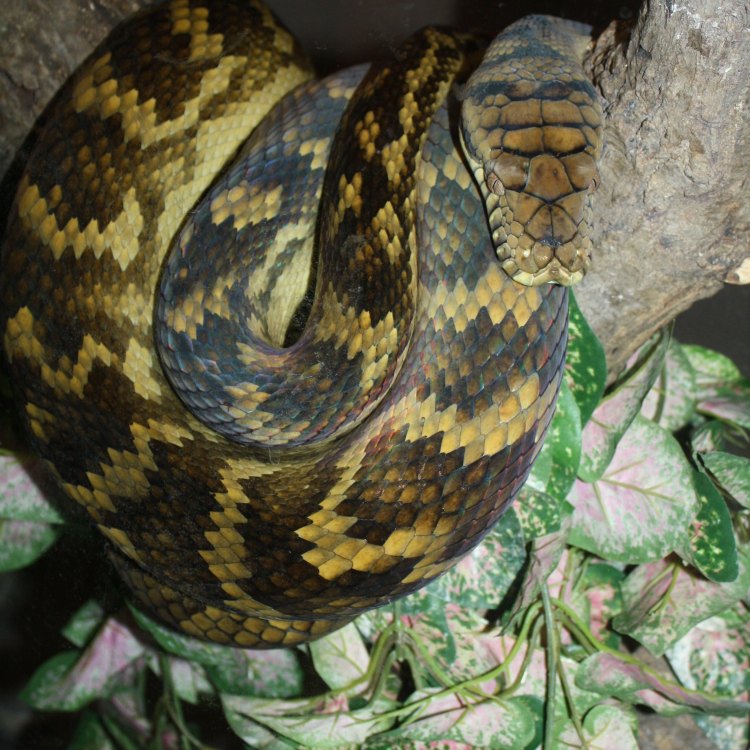
Amethystine Python
- Adult Size: 6 to 7 meters (20 to 23 feet)
- Average Lifespan: 25 to 35 years
- Reproduction: Oviparous (lays eggs)
- Reproductive Behavior: Mating occurs during the breeding season, with males engaging in combat and courtship rituals
- Sound or Call: Hissing, growling, and occasional vocalizations
- Migration Pattern: No specific migration pattern
- Social Groups: Solitary, except during mating season
- Behavior: Nocturnal and primarily arboreal
- Threats: Habitat loss, illegal pet trade, and hunting
- Conservation Status: Not evaluated (IUCN)
- Impact on Ecosystem: As a top predator, it plays a crucial role in maintaining the balance of the ecosystem
- Human Use: Popular in the pet trade and occasionally used in snake shows and exhibitions
- Distinctive Features: Distinctive diamond-shaped markings on its body
- Interesting Facts: Also known as the scrub python, it is the largest snake species in Australia
- Predator: Humans and other large predators
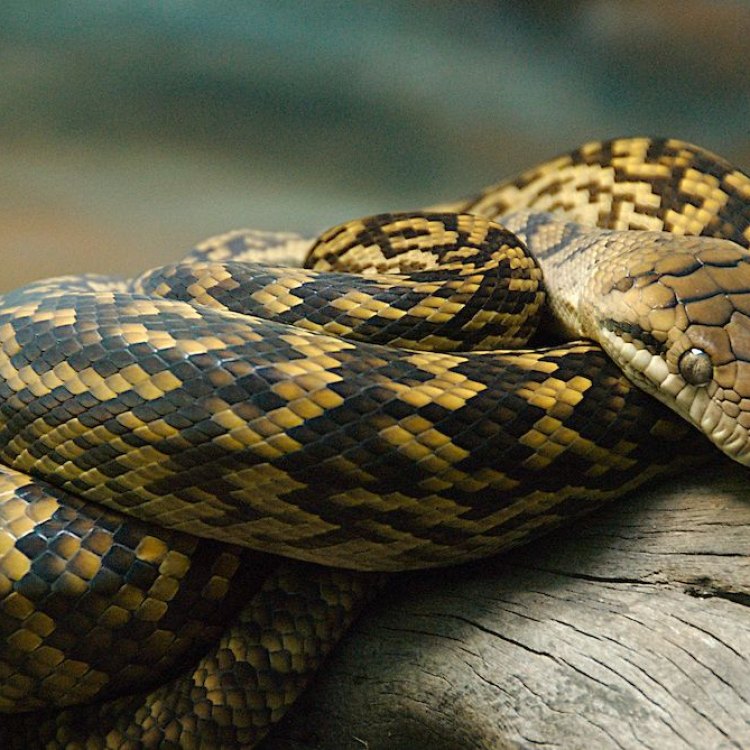
Morelia amethistina
The Amethystine Python: A Fascinating Giant of the Australian Wilderness
In the lush landscapes of Australia, there is a creature that stands tall, both literally and figuratively, in the realm of reptiles. The Amethystine Python, also known as the scrub python, is a majestic and intriguing species that has garnered the attention of many wildlife enthusiasts. With its impressive size, unique features, and captivating behaviors, this python has become an integral part of Australia's ecosystem. In this article, we will delve into the world of the Amethystine Python, exploring its distinctive traits, habitat, threats, and human interaction PeaceOfAnimals.Com.Adult Amethystine Pythons can grow up to an astonishing length of 6 to 7 meters, making them one of the largest snake species in Australia. To put that into perspective, that's equivalent to the length of two Honda Civics placed end to end! These giant pythons are also known to weigh up to 100 kilograms, and their impressive size is not the only thing that sets them apart.
When it comes to lifespan, the Amethystine Python can live for an average of 25 to 35 years in the wild. This may seem like a short lifespan compared to other reptiles, such as turtles and tortoises that can live well over 100 years, but for a snake, it is considered quite long. The Amethystine Python's longevity is affected by various factors, including habitat, food availability, and threats.
Reproduction is a crucial aspect of a species' survival and continuation, and the Amethystine Python has a unique way of reproducing. These snakes are oviparous, which means they lay eggs. Females will usually lay a clutch of 12 to 40 eggs, depending on their size and age. The eggs are incubated for approximately three months before hatching, and the young pythons are left to fend for themselves from the moment they emerge from their eggs Apennine Wolf.
The breeding season for Amethystine Pythons occurs during the wet season, which runs from around November to March. During this time, the males engage in combat and courtship rituals to attract the females. This behavior can be quite intense, with males intertwining and twisting their bodies in a show of strength and dominance. Another interesting aspect of their reproductive behavior is the fact that they have been observed to mate with multiple partners during the breeding season.
If you were to ever come across an Amethystine Python in the wild, you would most likely hear their distinctive hissing and growling sounds, with occasional vocalizations. These sounds are used for communication, both during mating and in defense. Being a solitary species, Amethystine Pythons are not known for their social behavior, except during the breeding season.
Unlike many other animal species, the Amethystine Python does not have a specific migration pattern. They are relatively sedentary creatures, preferring to stay within their preferred habitat for the majority of their lives. This behavior is supported by the abundance of food resources in their natural habitat, which we will discuss later on.
Another notable behavior of these giant snakes is their nocturnal and arboreal lifestyle. They are mainly active at night, using their keen senses and powerful bodies to hunt and navigate their surroundings. Amethystine Pythons are also skilled climbers, using their muscular bodies and sharp claws to move through trees and vegetation with ease. This arboreal behavior allows them to access different food sources, as well as seek shelter and defense against predators.
Speaking of predators, the Amethystine Python has its fair share of threats in the wild. Habitat loss, due to deforestation and human encroachment, is one of the most significant threats to this species. As their habitat shrinks, they are forced into closer proximity with humans, leading to conflicts and sometimes resulting in their death. Additionally, the illegal pet trade and hunting also pose a significant danger to these magnificent creatures.
Unfortunately, the conservation status of the Amethystine Python is still not evaluated by the International Union for Conservation of Nature (IUCN). This lack of evaluation is due to the limited research and data available on this species. However, as their habitat continues to be threatened, there is growing concern for their well-being and the need for conservation efforts.
As a top predator in the Australian ecosystem, the Amethystine Python plays a crucial role in maintaining the balance of the environment. They mainly feed on small mammals, such as rodents and possums, as well as birds and other reptiles. By controlling the population of these smaller animals, they prevent overgrazing and maintain the balance of the ecosystem.
Apart from their vital role in the ecosystem, the Amethystine Python has also caught the attention of humans for other reasons. They are a popular species in the pet trade, with their impressive size and unique markings making them a desirable addition to exotic pet collections. They have also been used in snake shows and exhibitions, showcasing their impressive strength and agility.
One of the most distinctive features of the Amethystine Python is its diamond-shaped markings on its body. These markings, which are usually a combination of dark brown and beige, give it a striking appearance and make it easily recognizable. These markings also serve as a camouflage, allowing them to blend in with their surroundings and ambush their prey.
Fun fact: Did you know that the diamond markings on their bodies are one of the reasons they are called "Amethystine" Pythons? This is because they are believed to resemble the purple gemstone, amethyst.
Despite their intimidating size and reputation, the Amethystine Python is relatively harmless to humans. They will only attack if threatened or provoked, and their bite is not venomous, although it can still cause injury due to their sharp teeth. However, like many other wild animals, it is essential to respect their space and observe from a safe distance.
In conclusion, the Amethystine Python is a remarkable species that holds a significant role in the Australian wilderness. From its impressive size and unique features to its fascinating behaviors and crucial role in the ecosystem, they truly are a marvel of nature. As humans, it is our responsibility to ensure their welfare and conservation, allowing these giant pythons to continue thriving in the wild for generations to come.
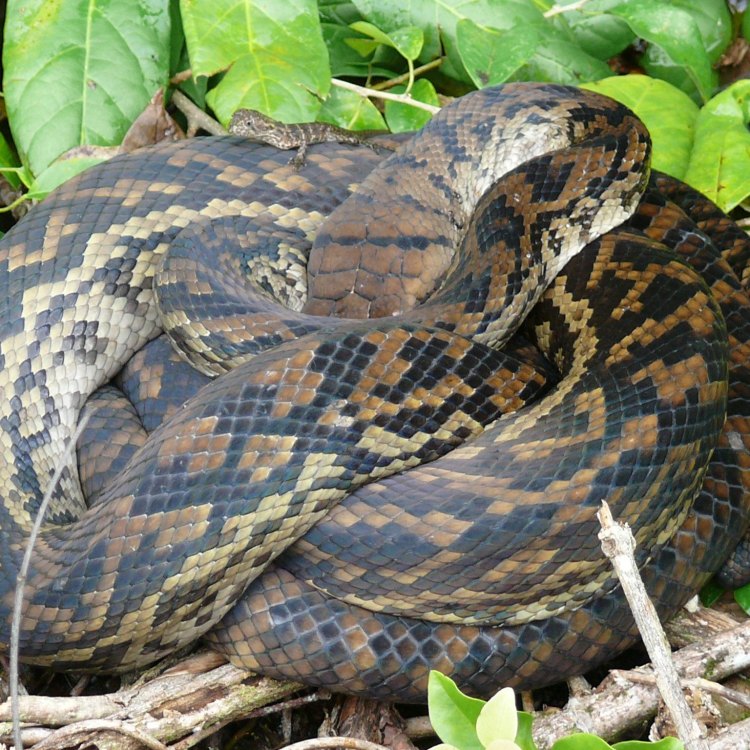
The Majestic Amethystine Python: A Fascinating Reptile with a Colorful Past
Disclaimer: The content provided is for informational purposes only. We cannot guarantee the accuracy of the information on this page 100%. All information provided here may change without prior notice.

